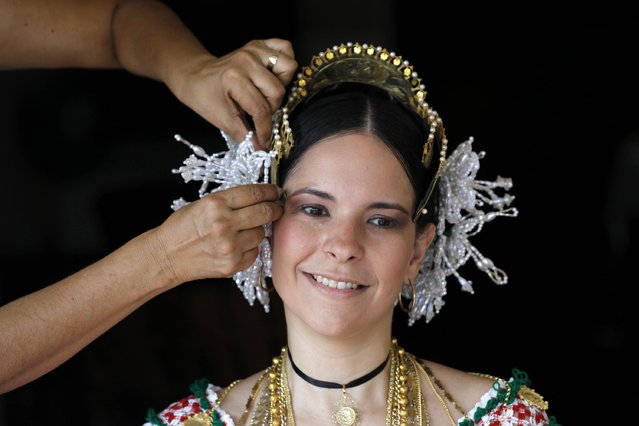
A woman is helped with adorning her hair with jewelry, part of the traditional clothing known as “Pollera”, before the annual Thousand Polleras parade in Las Tablas, in the province of Los Santos January 10, 2015. According to local residents, the Pollera dates back to the 18th century and was worn by the Spanish lower classes. Today, it has become the Panamanian national costume. The dress is made entirely by hand and the jewellery worn is pure gold and worth thousands of dollars. (Photo by Carlos Jasso/Reuters)
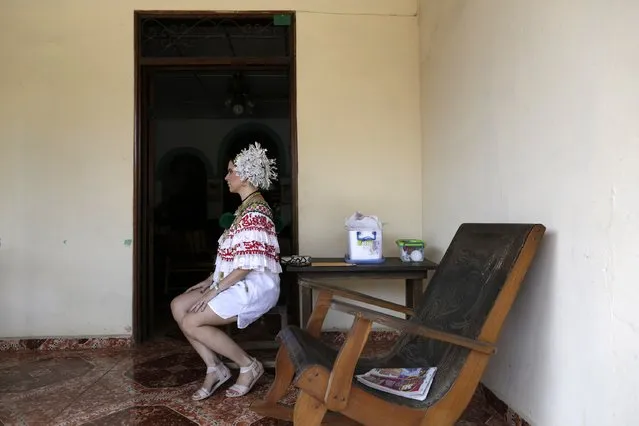
A woman wearing traditional clothing known as “Pollera” rests as she gets ready to take part in the annual Thousand Polleras parade in Las Tablas, in the province of Los Santos January 10, 2015. (Photo by Carlos Jasso/Reuters)
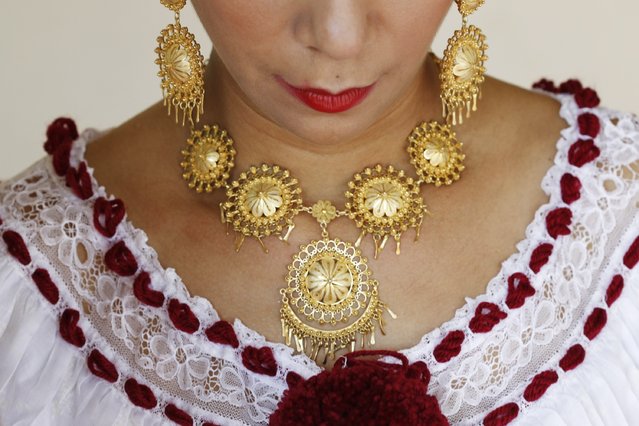
A woman wears golden jewelry, part of the traditional clothing known as “Pollera”, before the annual Thousand Polleras parade in Las Tablas, in the province of Los Santos January 10, 2015. (Photo by Carlos Jasso/Reuters)
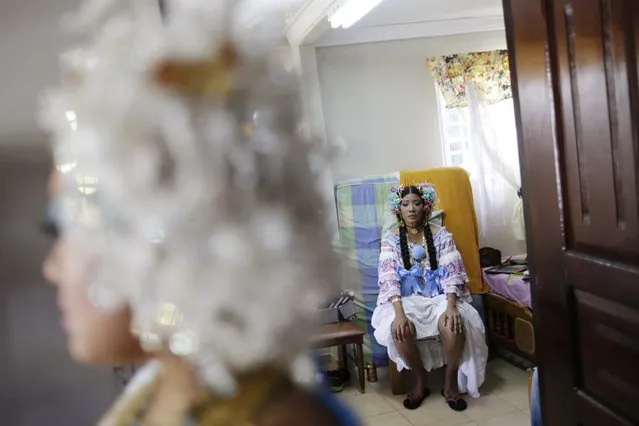
A woman wearing traditional clothing known as “Pollera” rests as she gets ready to take part in the annual Thousand Polleras parade in Las Tablas, in the province of Los Santos January 10, 2015. (Photo by Carlos Jasso/Reuters)

Women wearing traditional clothing known as “Pollera” take part in the annual Thousand Polleras parade in Las Tablas, in the province of Los Santos January 10, 2015. (Photo by Carlos Jasso/Reuters)
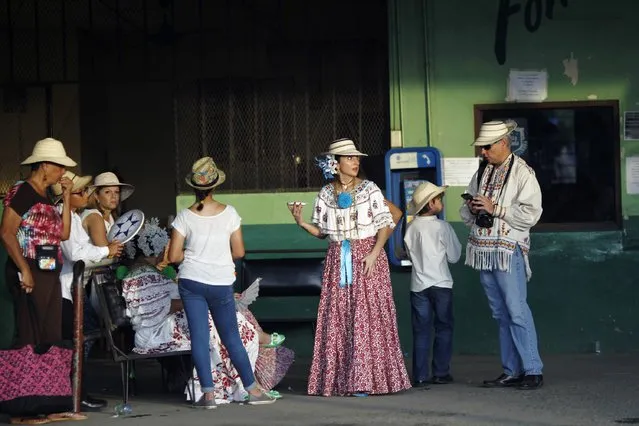
A woman wearing traditional clothing known as “Pollera” (C) is seen during the annual Thousand Polleras parade in Las Tablas, in the province of Los Santos January 10, 2015. (Photo by Carlos Jasso/Reuters)
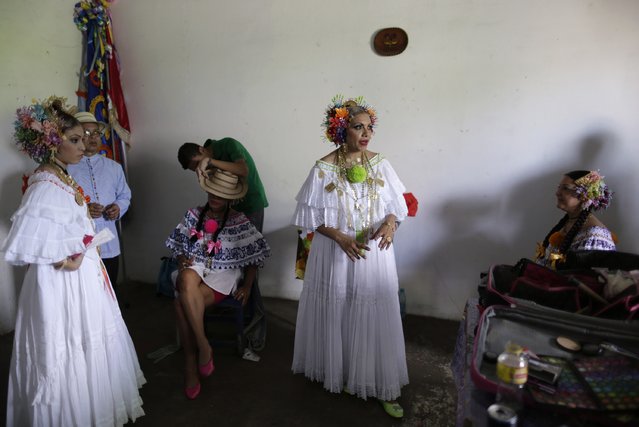
Women wearing traditional clothing known as “Pollera” get ready to take part in the annual Thousand Polleras parade in Las Tablas, in the province of Los Santos January 10, 2015. (Photo by Carlos Jasso/Reuters)
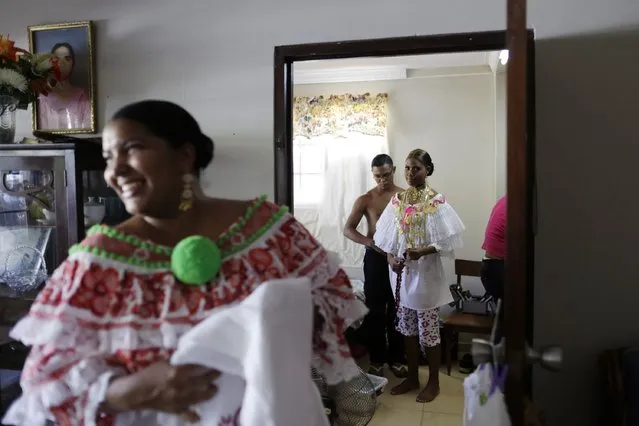
Women wearing traditional clothing known as “Pollera” get ready to take part in the annual Thousand Polleras parade in Las Tablas, in the province of Los Santos January 10, 2015. (Photo by Carlos Jasso/Reuters)
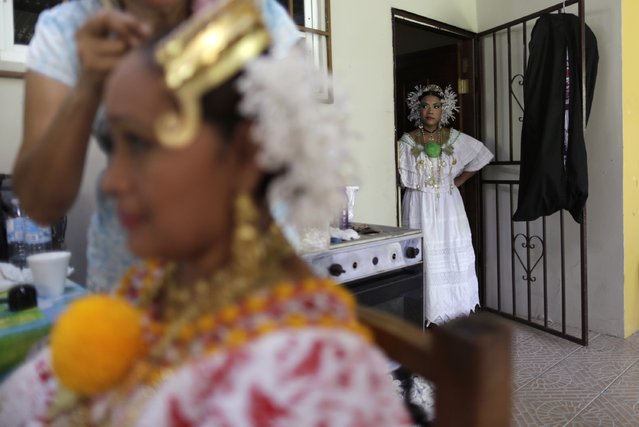
A woman wearing traditional clothing known as “Pollera” stands as she waits to take part in the annual Thousand Polleras parade in Las Tablas, in the province of Los Santos January 10, 2015. (Photo by Carlos Jasso/Reuters)
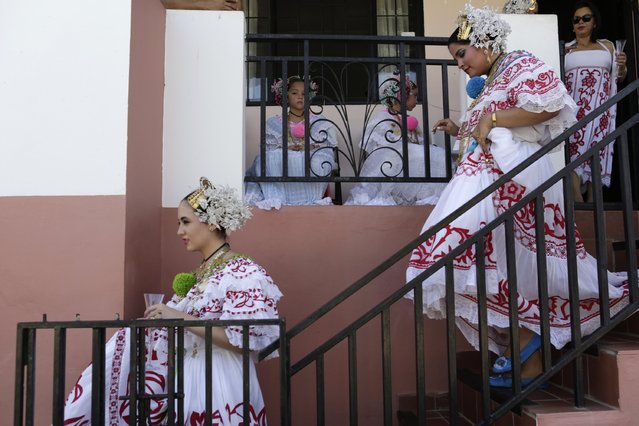
Women wearing traditional clothing known as “Pollera” are seen ready to take part in the annual Thousand Polleras parade in Las Tablas, in the province of Los Santos January 10, 2015. (Photo by Carlos Jasso/Reuters)
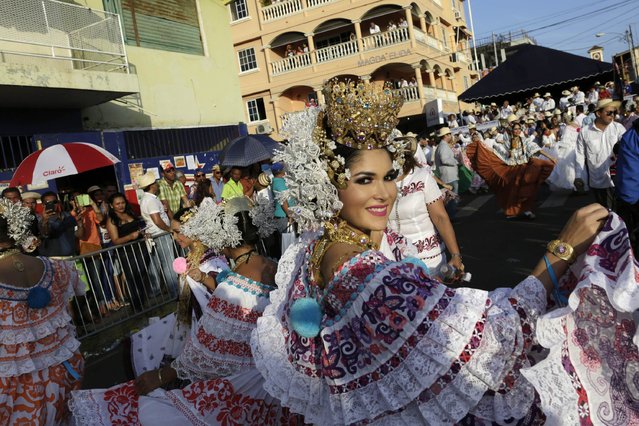
A woman wearing traditional clothing known as “Pollera” dances as she takes part in the annual Thousand Polleras parade in Las Tablas, in the province of Los Santos January 10, 2015. (Photo by Carlos Jasso/Reuters)
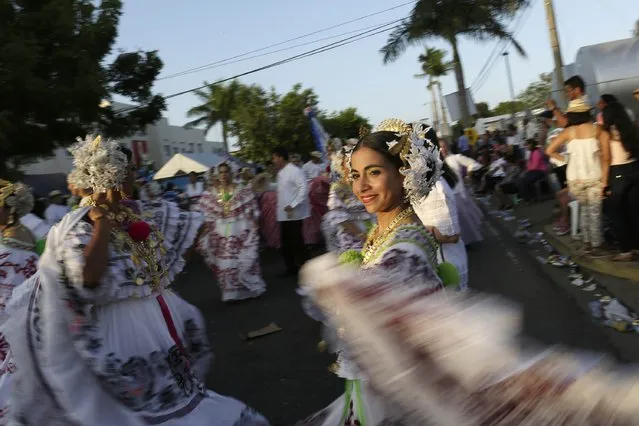
A woman wearing traditional clothing known as “Pollera” dances as she takes part in the annual Thousand Polleras parade in Las Tablas, in the province of Los Santos January 10, 2015. (Photo by Carlos Jasso/Reuters)
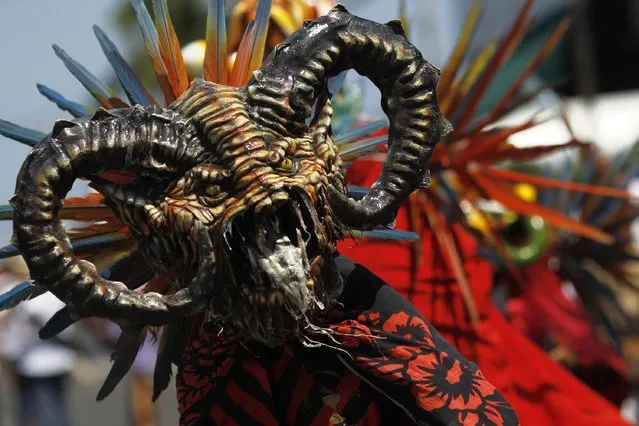
A man dressed in a traditional costume is seen during the Diablicos Sucios or Dirty Devils dance parade in Las Tablas, in the province of Los Santos January 11, 2015. The Diablicos Sucios parade, which dates back to the Spanish colonial period and originated from the Los Santos province, is celebrated with participants wearing different demon masks decorated with Guacamayas feathers and dancing to music with castanets and sticks. (Photo by Carlos Jasso/Reuters)
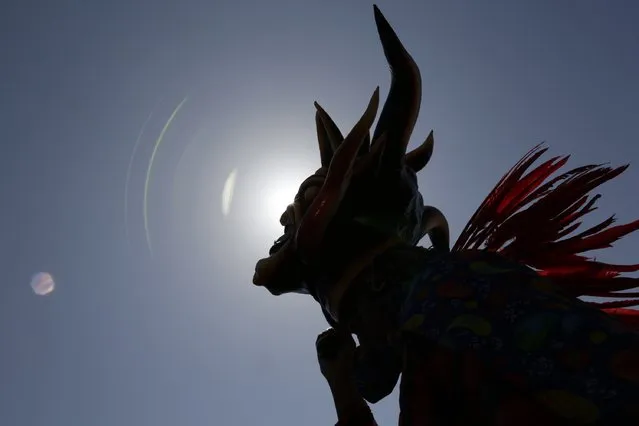
A man dressed in a traditional costume is seen during the Diablicos Sucios or Dirty Devils dance parade in Las Tablas, in the province of Los Santos January 11, 2015. (Photo by Carlos Jasso/Reuters)
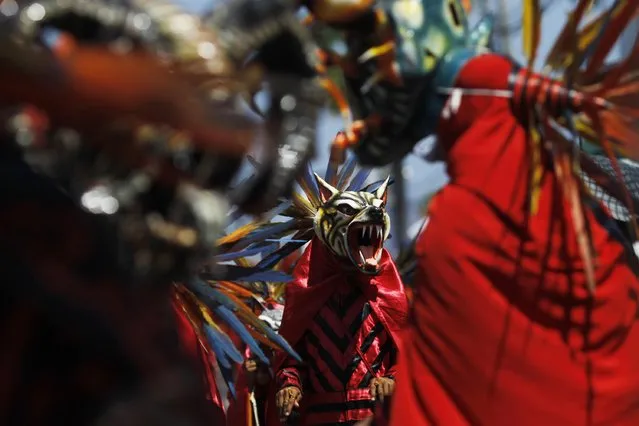
A man dressed in a traditional costume is seen during the Diablicos Sucios or Dirty Devils dance parade in Las Tablas, in the province of Los Santos January 11, 2015. (Photo by Carlos Jasso/Reuters)
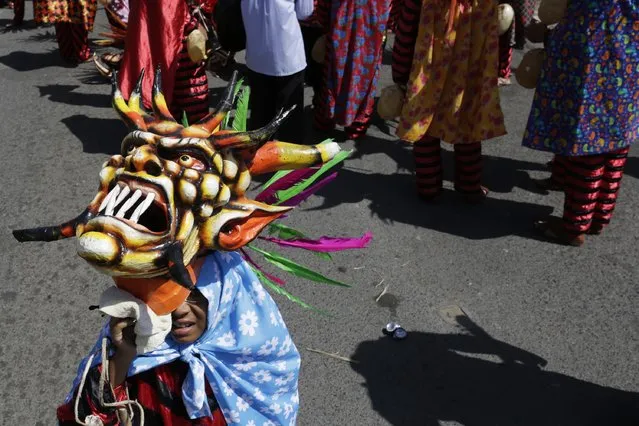
A child dressed in a traditional costume is seen during the Diablicos Sucios or Dirty Devils dance parade in Las Tablas, in the province of Los Santos January 11, 2015. (Photo by Carlos Jasso/Reuters)
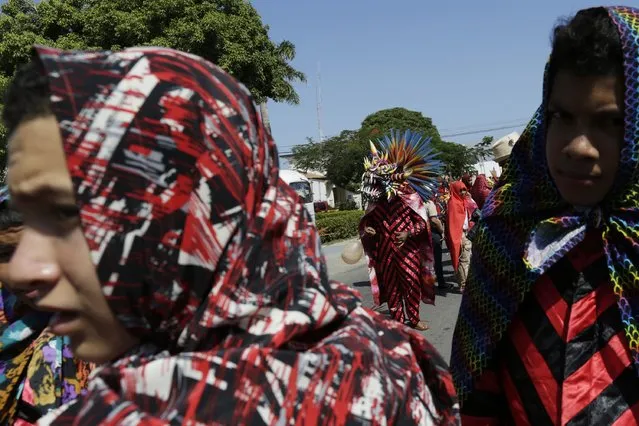
A man dressed in a traditional costume is seen during the Diablicos Sucios or Dirty Devils dance parade in Las Tablas, in the province of Los Santos January 11, 2015. (Photo by Carlos Jasso/Reuters)
12 Jan 2015 15:46:00,
post received
0 comments
